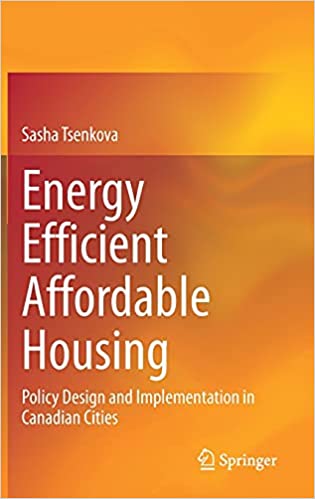
If you want to increase your home’s energy efficiency, there are various ways to achieve this goal. A home energy system profile is the best method to determine which upgrades will make the most impact. This profile gives a detailed look at how energy is used in your house, highlighting both strengths and areas for improvement. By analyzing this information, you can choose the upgrades that will have the biggest effect on saving energy. Explore this insightful profile to make informed decisions on boosting your home’s energy efficiency.
Issues with energy efficiency
Homeowners often face issues when it comes to house energy efficiency. This is because older houses often use more energy. In addition, they may be in a state of disrepair, which can negatively impact the local community. The EPA has resources to help homeowners plan and implement home energy efficiency improvements. These measures can help reduce energy costs and improve the comfort of a house.
There are a variety of issues to consider, from the type of fuel to the appliances and equipment that run them. It’s important to consider the use of each item to avoid energy waste. It’s also important to consider the occupancy of each room. If there are multiple occupants, the energy usage can increase. Planning for energy efficiency in your house requires a system approach.
Recent research shows that low-income households can spend as much as 8.1% of their income on energy costs compared to the 2.3 percent of households with higher incomes. Many poor families must cut back on other expenses in order to pay their energy bills. Jeff Genzer, an attorney at the National Association of State Energy Officials is adamant that the intersection of energy and housing issues is one of his most difficult problems.
It is also possible to reduce climate change by improving your house’s energy efficiency. The United States consumes 20 percent of its energy to heat and cool homes each year. Older homes produce more carbon than older ones. Investing in energy efficiency upgrades can also help strengthen the existing housing stock.
Many low-income households are plagued by high energy bills and poor thermal comfort. Making upgrades to their home can help them cut energy expenses, improve thermal comfort, and address other problematic issues that have plagued the home environment. A recent New York City study examined the impact of energy efficiency upgrades in 20 households living in low-income communities. Surveys were administered to heads of households from different housing types. Interviews were also conducted with landlords in buildings that have recently had energy efficiency upgrades. The results showed that energy efficiency upgrades improved health and safety and decreased energy costs.
Improved thermal comfort was the most popular benefit of improving homes’ energy efficiency. 15 of the study participants reported a better home temperature and more control over their home’s temperature. Ten of the participants also reported that they used a secondary source of heating before making energy efficiency upgrades. This finding is important, because energy bills are rising and people are increasingly aware of the importance of reducing energy expenses.
Energy efficiency measures cost effective
There are many ways to lower the cost of energy in your home. You can save money on your electricity bills by adopting energy efficiency measures. Some of these measures include insulation, solar panels, draught exclusion and double glazing. These measures can be costly, but they all result in significant savings.
While energy efficiency measures can seem expensive at first, they are very cost-effective once you start to reduce your energy bills. In addition to the financial benefits, many energy efficiency improvements are also environmentally friendly. These improvements can help you reduce your utility costs and improve the comfort of your home. Whether you choose to install an energy efficient furnace or invest in an energy efficient refrigerator, it is essential to make an informed decision.
In addition to lowering utility bills, some homes qualify for rebates and incentives from the U.S. Environmental Protection Agency (EPA). Homeowners who make these choices save on their energy bills and reduce their greenhouse gas emissions. Many utilities and brands offer incentives for energy-efficient appliances. An energy efficiency audit can help make the best decisions for your home and help you save money.
Some energy efficiency measures are more expensive than the upfront cost. They also have ongoing costs. For example, installing a high-efficiency LED light bulb will result in a significantly lower annual electricity bill because it lasts twelve years, compared to five years for the baseline halogen bulb. Similarly, installing extra insulation in your home will reduce heating and cooling costs.
Although some energy efficiency measures can be costly, they can help you save money in the long-term. The utility bills you save will often outweigh the initial costs. However, some energy efficiency measures require you to replace existing equipment, which can add up to a significant investment. Some are worth the investment, while others are not. Some improvements can take a long time to pay off.
Up to 30% savings can be achieved by upgrading your energy efficiency. Investing in a combination of different energy-efficient upgrades can result in even larger savings. For instance, by combining different improvements in your home’s heating and cooling system, you can save up to 30% on your utility bills.
House energy efficiency measures cost differently depending on where you live. Using the full cost estimates of a measure means you can compare how much it would cost to implement it in your home. You may also want to consider the on-going operation and maintenance costs of the measure. Heat pump water heaters, for example, require regular filter cleaning and the discharge of condensate. Electric resistance water heaters require minimal maintenance.
Energy efficiency measures have an impact on home value
A recent study from Sweden investigates the impact of energy efficiency measures on home values. The results suggest that an increase in energy efficiency can increase the value of a home by 0.03%. This study used a small sample of residential sales to assess the effects of different energy efficiency measures on property values.
In the Cost vs. Value Report, authors sought to include energy efficiency measures as an additional factor when evaluating resale value. However, they were constrained by the need to collect cost and value data for many cities and the length of the payback period. Researchers were faced with additional challenges.
Other benefits of energy efficiency improvements include: They increase comfort in the home, reduce energy costs, and improve indoor air quality. Research shows that homes with higher energy efficiency are warmer, dryer, and better ventilated. This reduces the risk of developing diseases and prevents indoor air pollution, which can be a serious problem in areas with high levels of radon. In addition, there is evidence that energy-efficient buildings reduce vacancy, which can encourage landlords to invest in energy efficiency improvements.
Aside from increasing home value, energy efficiency upgrades also save borrowers money on utility bills and other expenses. Energy upgrades also improve a home’s health, comfort, and happiness. They are also a necessary step towards reducing global warming. Consider making energy efficiency improvements to your home and adding green features if you are thinking about selling it. This will increase the value of your home and make it more attractive to potential buyers.
Energy efficiency upgrades can reduce your energy bills by up to 30%. Investing in energy efficiency is a smart financial move and can help you qualify for a mortgage more easily. Families will also be able to build equity faster by lowering fuel costs. A new study by Freddie Mac found that homes with higher energy efficiency sold for more than homes without ratings.
In addition to saving money, energy efficiency also helps reduce the carbon footprint of a home. A home is responsible for 19 percent of the country’s greenhouse gases, and implementing measures to improve energy efficiency can reduce that by 25 to 30%. The EPA and other government agencies have recognized the benefits of implementing energy efficiency measures in the home. The United Kingdom has set guidelines and regulations that encourage the adoption of energy efficiency measures.
In addition to saving money on energy bills, energy efficiency can also improve the health of homeowners. Numerous studies have shown that energy efficiency improvements can improve the circulatory and respiratory systems. These improvements are particularly helpful for people in areas with poorer housing and high rates of air pollution. A comprehensive energy retrofit program also showed a significant drop in hospital admissions and emergency room visits for children with asthma.
Hi, I’m Emma. I’m the Editor in Chief of Tiny House 43, a blog all about tiny houses. While tree houses are often associated with childhood, they can be the perfect adult retreat. They offer a cozy space to relax and unwind, surrounded by nature. And since they’re typically built on stilts or raised platforms, they offer stunning views that traditional homes simply can’t match. If you’re looking for a unique and romantic getaway, a tree house tiny house might just be the perfect option.










